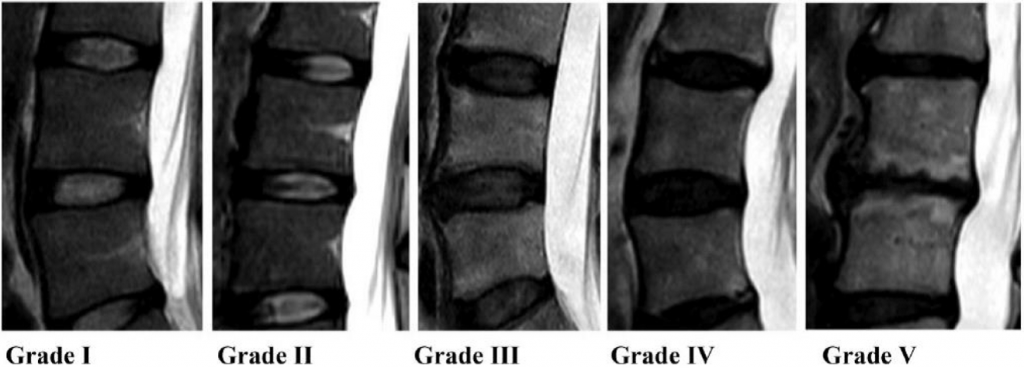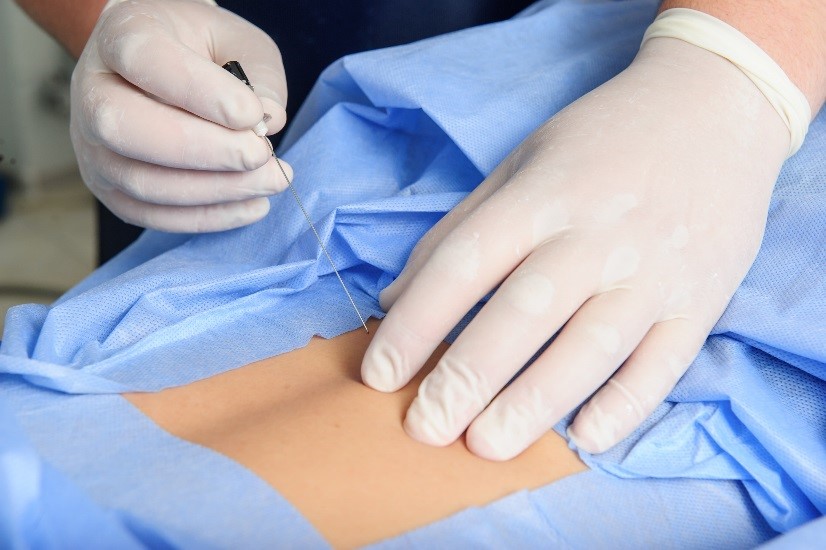Degenerative Disc Disease: Steroids Vs Stem Cell Therapy
Degenerative disc disease is extremely common condition affecting all ages and almost whole spine.
Despite huge advances in medical science there are limited treatment options for Degenerative disc disease.
Degenerative Disc Disease is the blanket term that describes the conditions arising due to the general wear and tear of inter-vertebral discs. It usually presents as pain in the lower back, buttocks or thighs which lasts from several days to a few months. Patients find that no particular position relieves the pain and it worsens when they sit down. Our day to day activities, posture, diet and genetic makeup dictate the onset and worsening of the disease.
Our spine is made of a string of 33 bones called vertebrae which are connected to each other through ligaments and intervertebral discs. In between two vertebra there are fluid filled discs which act as shock absorbent and provide the spine, its flexibility. With progressing age, the discs undergo wear & tear, lose its fluid content and sponge like quality and thus flexibility. These discs have a very limited blood supply which is just enough to sustain them and help withstand occasional minor disturbances. However, repeated trauma can lead to hardening of these discs and development of cracks in them which becomes a source of constant neck or lower back pain. On MRI scans, degenerated discs appear darker relative to normal discs.
Discogenic Pain

Discogenic pain “disc related pain” in degenerative disease is usually localized around the offending disc(s) and doesn’t radiate far from its location. This pain is thought to arise due to new nerve endings growing inside the disc after developments of cracks (fissures) through normal daily wear and tear or through trauma. Discogenic pain presents as a deep-seated pain around the spine and typically no particular position appears to relieve pain.
Interventional pain management procedures for discogenic pain
Interventional pain procedures like like Discography or Provocative discogram can help pinpoint the offending disc(s). Discography is a interventional procedure during which we create pressure inside individual disc(s) under X-ray guidance to duplicate patient’s everyday pain. Discography is mainly used to diagnose the particular disc as offending agent for pain.
Pain due to Disc Herniation arises when a disc develops cracks or in medical terminology ‘fissures, bulge, protrusion, extrusion’ and the leaking disc contents put pressure on the surrounding nerves. Patient might experience shooting pain or sciatica like symptoms with pain radiating down from the neck to the arm or down their leg from the lower back as the herniated disc causes nerve irritation. As the discs have very little blood supply of their own, over the counter pain relievers or other oral medications provide very limited pain relief in these cases.
Treatment Options for discogenic pain
Epidural Steroid Injections, a type of interventional pain management procedure is an effective way to relieve pain caused by herniated discs. Steroids, which are powerful anti-inflammatory medications when injected around the herniated disc provide relief by reducing the sensitivity of the nerve ending and reducing inflammation around the disc herniation and protrusion allowing the body’s natural healing process to work. Although Epidural injections are helpful for relieving Sciatica symptoms caused by disc herniation, they provide limited help for localized low back pain originating from deep seated disc issues ie degenerative disc disease presenting as Discogenic pain.

Epidural Steroid Injection in the spine
Traditionally, treatment options for Discogenic Pain have mostly been surgical in nature and aim to provide pain relief without actually addressing the root cause of the condition. Some options available are:
- Micro Discectomy, where the intrusive inter-vertebral disc fragments are removed via surgery
- Spinal Fusion Surgery, where vertebrae surrounding the offending disc(s) are fused. This provides pain relief by limiting movement of the affected disc(s). However, the fused vertebrae divert pressure to other areas of the spine and over the years, patients develop problems above or below the fusion level adding to herniation, stenosis or spondylosis.
- Total Disc Replacement, as the name implies, involves replacement of the natural disc with an artificial one. Studies show that the outcomes for this surgery are similar to that observed with Spinal Fusion Surgery.
Regenerative Therapy
Regenerative therapy is another treatment modality that has been gaining popularity for treatment of Degenerative Disc disease. Platelet Rich Plasma (PRP) therapy is a kind of Regenerative therapy that has been successfully used in many studies to reduce Discogenic low back pain. It involves injecting a small amount of growth factor rich fraction of your blood inside the offending disc(s).

The growth factors activate and expedite the natural healing processes of the body, healing the discs from within and relieving pain. Stem Cell Therapy, another regenerative therapy uses Mesenchymal Stem Cells derived from a patient’s bone marrow to repair Degenerated Discs. Several cases have been reported where the discs have been repaired to normal disc heights alleviating the patient’s disc related pain in as little as 6 months.

Conclusion
There is no definitive treatment for Degenerative disc disease with traditional approaches and many patients have to resort to spinal fusion surgeries. Regenerative therapies offer new hope for patients suffering from disc diseases providing a mechanism for healing the discs along with providing long term sustained pain relief
Leave a reply
My father is suffering from a herniated disc and is suffering from pain because of it. Thanks for suggesting that interventional injection can be a pain management procedure that he can get. I think we should inquire more about this with a service regarding its benefits and risks so he’ll get a choice if he should get it or not.
ReplyThanks for reading the post and your comment. Commonly after age 60, arthritis or bone spurs becomes an issue apart from disc herniation. If your Dad has shooting pain down his thighs or legs, he will be a good candidate for specific Epidural steroid injection, based on MRI findings. Arthritis or bone spurs cause localized aching back or neck pain which may need a separate plan of treatment. Thanks, Dr. Suresh Chand
ReplyI am living with frozen shoulder or painful shoulder for last three years. Early x- Ray’s showed nothing while pain intensified. Recently went to see a chiropractor for stiff neck, and stretching both shoulders. The visit made caused unbearable stiffness and pain in neck and left and both shoulders are hurting. I cannot find comfortable position to sleep. Stand and feel my head is too heavy for neck.
ReplyWent to see an orthopedic who placed me on steroids for seven days, did mentioned spinal stenoisis as have no curve in neck. Steroids are not helping. I love the idea of stem cell and plasma rich therapy.
Where can I find latest info?
Shamsa, We have to see whats the cause of your pain, shoulder or neck. Neck pain often radiates to shoulder, you have to try simple things first like working on your posture, physical therapy and if it still bothers you then a referral to pain management specialist is appropriate. Suresh Chand, MD
Replyhi always when you feel some pain in your neck or shoulder on this time go to physiotherapist .. because its golden time for you
ReplyHello my name Colette and I have issues with my entire spine, I had several steroid epidurals, with very little relief, and I believe the procedure created more excruciating pain for me, especially in my thoracic area, all I feel is a stabbing burning pain, every minute of the day, my quality of life is compromised, also have spinal stenosis, I need help, I’m hoping and praying that stem cell therapy would be able to help me, this is my only hope, I do not want surgery, please help!!!
ReplyColette, Thoracic area or midback is difficult area to treat. Someone has to examine your and look at your imaging to see cause of your pain and likely success of treatment options. Suresh Chand, MD
ReplyI have two disks which have almost lost all their fluid but still have some left. They have been injured years ago and are sources of great pain. I have and have found no one willing to try stem cell injections as a treatment for possible repair. Considering original fluid still remains to be replicated, i feel I would have a good chance with stem cells.
ReplySomeone has to look at your recent MRI and your symptoms, that will guide us likely success of your treatment. Suresh Chand, MD
ReplyHi,
ReplyShot in the dark here, but I’ve been suffering from a really bad disc herniation at L5,S1 for over a year. I have tried 6 rounds of prolotherapy, chiro – (cox therapy), physio, acupuncture, massage, personal trainer, etc. Doctors keep suggesting surgery but I don’t want to do it. Interested in stem cells or PRP. I have multiple MRI’s to show. Please let me know if there is anything the clinic can do.
I have the same case with you and the approaches that had been done and still I have the persistent back pain. This time my sister, who is a distributor of purtier placenta gave me this kind of supplements. I’m in my 3rd week of taking it. Hopefully and looking forward for a good pain management on this after 6-month course. 🙏🙏🙏
ReplyKelly, I am in the same boat. L5 S1. Very active lifestyle and for over 3 years I have been pretty much crippled for most of the day living with constant pain and limited in everything including any potential for bodybuilding for the legs which I love. I have stem sell therapy scheduled in a week and am praying and hopeful it is the solution.
ReplyHello Kelly how everything went with the steam cells? I am 20 and I had a microdisectomy of L4-L5 which left me with degenerative disc and pain, I am hopeful I can work and save money for future treatments for this, please tell me more about your experience with steam cells
Reply